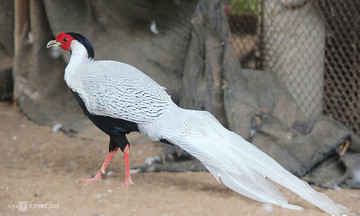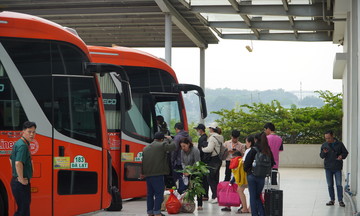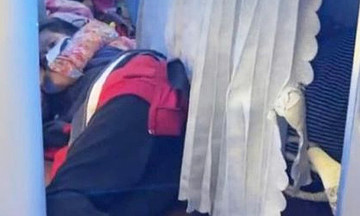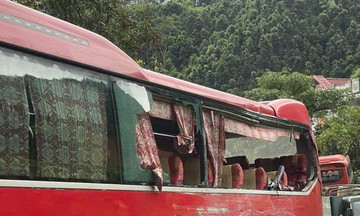Hundreds of snakehead fish farms now dot the white sands of Tan Hai and Bac Hoa villages in Cam Hong commune. Some of these farms have been recently dug on land previously occupied by protective casuarina forests. Dozens of dead trees, 20-30 cm in diameter, stand as stark reminders of the deforestation.
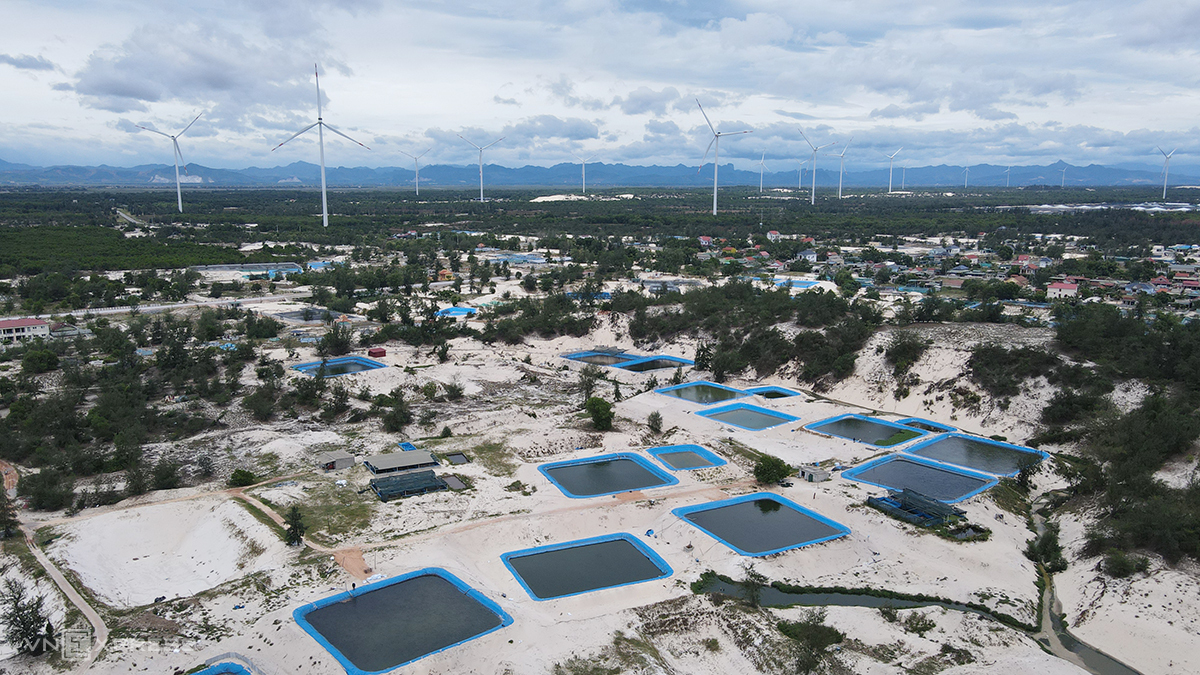 |
Dozens of tarpaulin-lined snakehead fish farms sit on the sand near residential areas. Photo: Dac Thanh |
According to residents, snakehead fish farming on these sandy areas began about 10 years ago. Initially, only a few households participated, but the number has since swelled to hundreds. Production forests, protective forests, and even fertile cropland have been converted into fish farms.
Farms typically started as 4-5 meter deep ponds, drawing water from wells drilled dozens of meters down. Due to low efficiency, farmers transitioned to lining the ponds with tarpaulins. An average farm spans 300 m2, requires an investment of around 30 million VND, and holds 30,000 juvenile fish.
Over 150 people in Tan Hai and Bac Hoa villages now farm snakehead fish, with the largest farm covering approximately one hectare. After 7-9 months, the fish are harvested and sold for over 50,000 VND/kg. A 300 m2 farm can generate a profit of 200 million VND. The two villages produce approximately 2,500 tons of commercial snakehead fish annually, generating an income of 250 billion VND.
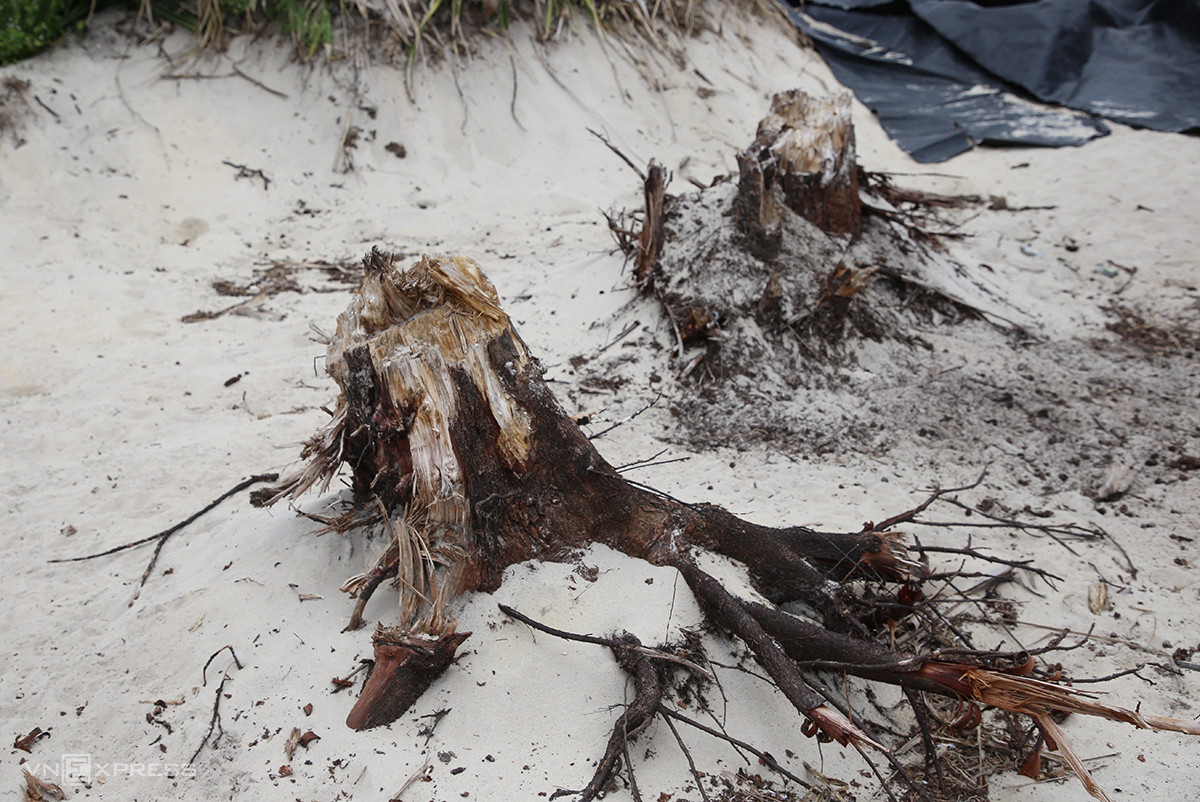 |
Many felled casuarina trees remain as stumps. Photo: Dac Thanh |
One farm owner explained the illegal land conversion. Coastal residents traditionally rely on near-shore fishing, which provides a low and unstable income due to its dependence on weather. Snakehead fish farming offers a more stable and higher income, leading many to switch professions. "The strong market for snakehead fish prompted me to dig three ponds, nearly 1,000 m2 total, on production land and line them with tarpaulins for farming," he said.
Water is pumped from wells, and after each feeding, hundreds of cubic meters of wastewater are discharged from each farm to remove waste. This water flows across the sand and directly into the sea through drainage ditches.
Drawing groundwater for fish farming has impacted the availability of clean drinking water. One resident explained that previously, wells only needed to be 3 meters deep to access clean water. However, since the rise of snakehead fish farming, water sources have become polluted and wells have dried up.
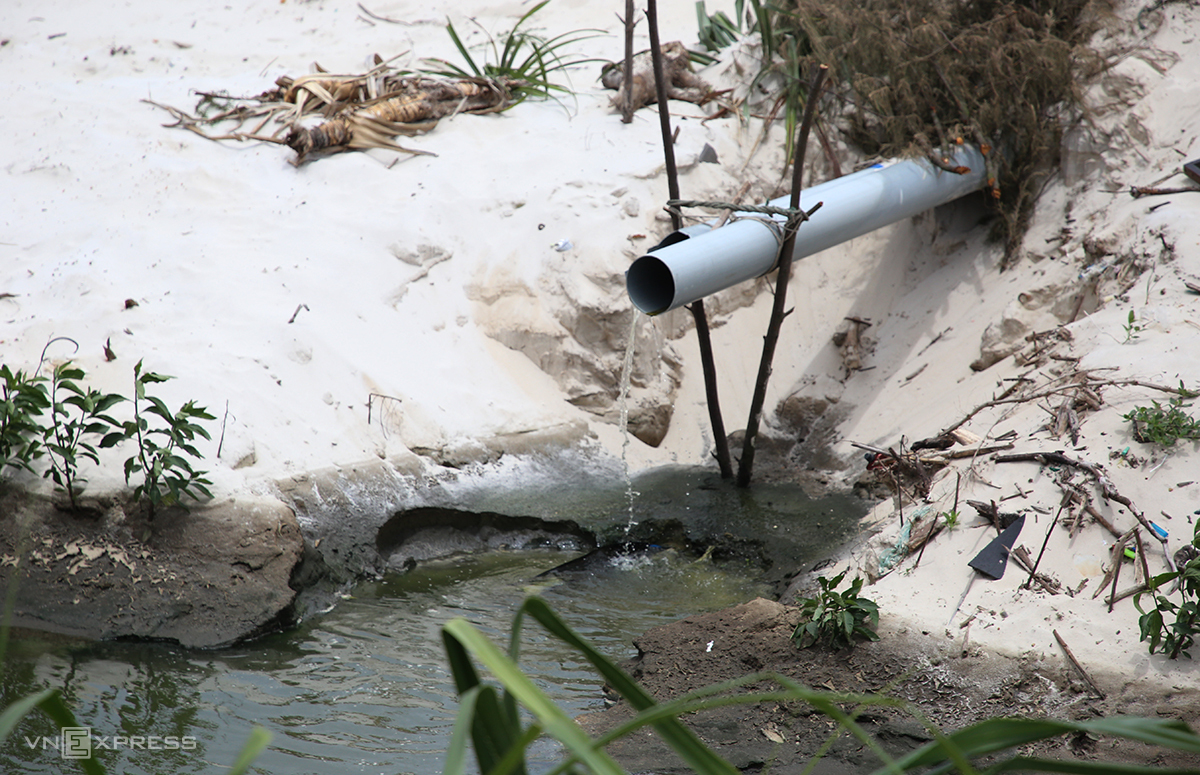 |
Untreated water from a fish farm is discharged into a ditch. Photo: Dac Thanh |
Residents now rely on wells drilled dozens of meters deep, but the water remains contaminated. "Even after pumping it into a tank and filtering it through sand, the water is still murky and contaminated with iron," one resident said. Additionally, a foul-smelling, blue-tinged stream of wastewater flows through the two villages, carrying the carcasses of dead snakehead fish discarded from the farms. Residents now avoid swimming in the sea near this area.
Dinh Thanh Quang, Deputy Director of the Dong Hoi and Coastal Protection Forest Management Board of Quang Tri province, stated that the encroached forest area used for fish farming in Bac Hoa and Tan Hai falls within 5 hectares of protective forest already transferred to local authorities. Since 4/2025, the board has identified seven cases of encroachment for fish farming, each pond covering 80-220 m2. The board has documented these cases and transferred them to Cam Hong commune for action.
Tran Thi Ngoc Tram, Chairwoman of Cam Hong commune, said that residents took advantage of the commune merger period to rapidly establish fish farms. After its establishment, Cam Hong commune inherited 29 cases of forest encroachment and land misuse from the former communes. The commune has reviewed and documented 50 households with 65 violating structures. "We are continuing our review and encouraging violators to dismantle their farms. Three households have already complied. We are determined to prevent any new farms from being established," she said.
Tram acknowledged that snakehead fish farming is profitable and provides a livelihood for many households. However, there is currently no centralized farming plan, leading to unregulated farming practices and a lack of proper land conversion procedures. To address this, the commune plans to establish a centralized farming zone between 2026 and 2030, providing technical guidance and environmental impact assessments.
Dac Thanh



